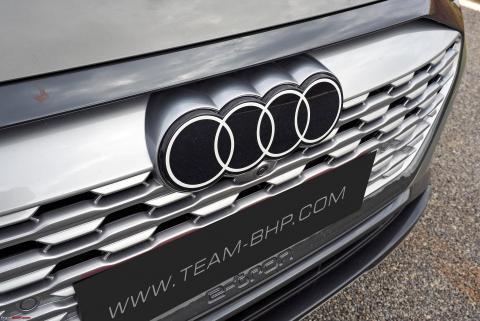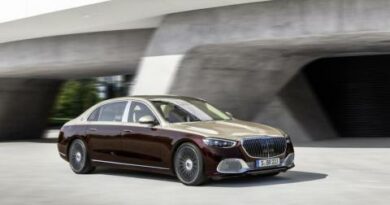Getting a sub 1 crore car to match the Innova’s comfort
My family has a very strong liking for the Toyota Innova. Our cars at home (Mercedes E-Class, Skoda Superb, etc.) do not come close to the comfort, especially for the older folks.
BHPian L8ButV8 recently shared this with other enthusiasts.
As an avid Team-BHP reader for many years, I am looking for guidance on an unusual mod: How feasible is it to add softer dampers/springs to a Skoda/Audi sedan?
My family has a very strong liking for the Toyota Innova. Every time we get an Innova taxi it provides excellent comfort in the middle row. Our cars at home (V213 E class, Skoda Superb etc) do not come close to the comfort, especially for the older folks. However, they do find Japanese sedans (our ex-Teana, old Corolla) more comfortable. My read is that they do not like the lower seating position, harder suspensions and taut leather seats of the Germans.
We’re looking to replace the Skoda Superb and are confused. While we want the comfort of an Innova (middle-row bucket seats), it misses out on the silent, smooth driving dynamics of upper-market vehicles. I am trying to understand two things:
- Are there any vehicles that provide Innova-like comfort that we should consider on a budget of up to 1 Cr? I understand that comfort is very subjective, but would appreciate members’ views.
- Is it feasible to modify the suspension of an Audi A6, Q5, Q7 or Skoda Superb to provide a softer ride?
I am open to buying a new or used (if the car is discontinued), and spending on any modifications needed (e.g putting in Innova seats etc). We have a strong preference to not buy more than one vehicle, due to the maintenance headaches associated with adding more cars.
Thanks in advance.
Here’s what GTO had to say about the matter:
Unlike mainstream Marutis & Tatas, for German cars sold globally, you will see a lot of aftermarket suspension options available. Check & research on international websites too. Although, be warned that 90% of them will be to improve handling, not ride comfort. I spent a lakh on the AVO suspension to reduce my Thar’s bumpiness and am happy with it.
This is why buying a premium car with adaptive dampers makes a whole lot of sense in India (from the Kodiaq and up, many luxury cars offer adjustable suspensions). You can make them soft on bad roads, and firm when you’re out on a sporty drive.
The most simple fixes are in this post. Downsize to a lower variant’s wheel size as long as there is enough clearance for the brakes.
Here’s what BHPian androdev had to say about the matter:
Your comparison of E Class and Innova reminds me of a recent discussion on S Class vs Vellfire. If you go over a large dip in the road surface at good highway speed, the suspension on the German cars doesn’t bottom out. There are many such characteristics that come to the fore when the speeds are on the higher side and the car is being driven enthusiastically. If these aspects are relevant to you, you would buy an S Class/7 Series, etc. For a sedate and risk-averse driver (like a good chauffeur), Vellfire would make a much better choice. European cars also tend to be very safe in real-world accident situations – which are far more severe and bizarre than NCAP tests which are conducted at much lower speeds than the speeds involved in real-world accidents.
Unfortunately in India, there is a huge prestige thing associated with the European brands so even a chauffeur-driven customer prefers a European car even though they are inferior to the Japanese cars when it comes to passenger comfort, especially the rear seats.
What I am trying to get at is that European and Asian manufacturers work with different objectives and that reflects in the overall user experience. You can’t have it all (within a budget) – so it’s not a case of ignorance but a conscious design and marketing decision.
The cheapest modification you can do to improve comfort is to downsize the alloy wheels, go for nice comfort-oriented high-quality tires like Michelin Primacy and work with 2-2 PSI lower than recommended tire pressure. Buy a used car from a higher segment – it will offer better comfort.
Adaptive suspension, IMHO, only makes sense if the default suspension is tuned to be very sporty like in BMWs. Mercedes default suspension is typically comfort-oriented so one doesn’t really benefit from an adaptive suspension as far as comfort is concerned. Can be helpful if they want to switch to a sporty suspension mode.
The story of seat comfort is also similar. European models come with hard-wearing seats and cushion which lasts for many years. Japanese seats while more comfortable, wear out very quickly, especially when the passengers are on the heavier side. European brands also don’t like to give good rear seats in their entry-level models and reserve them for their higher-end models only.
I would have suggested a pre-owned S Class but then people argue that Vellfire is better, so the debate never ends.
Looks like I’ve rambled a lot 🙂 If you don’t want the high-speed driving benefits of European cars – you will be better served by Japanese cars. European cars – like seat belts – a little uncomfortable but offer more protection.
Here’s what BHPian PrideRed had to say about the matter:
You may look at a Lexus that fits your budget and from what I see, a crossover should keep you happy. The suspension of NX or ES is on the softer side when compared to say a 5 series or a Q5.
Here’s what BHPian inwester had to say about the matter:
Why not just get the new Innova Hycross?
It’s very silent compared to the old one, hybrid petrol vs. diesel, more powerful and fuel-efficient, monocoque instead of body-on-frame resulting in better driving dynamics and easy ingress/egress, has acoustic glass for noise reduction and those comfy seats!
I got one recently.
Give it a try.
Check out BHPian comments for more insights and information.
Source: Read Full Article


